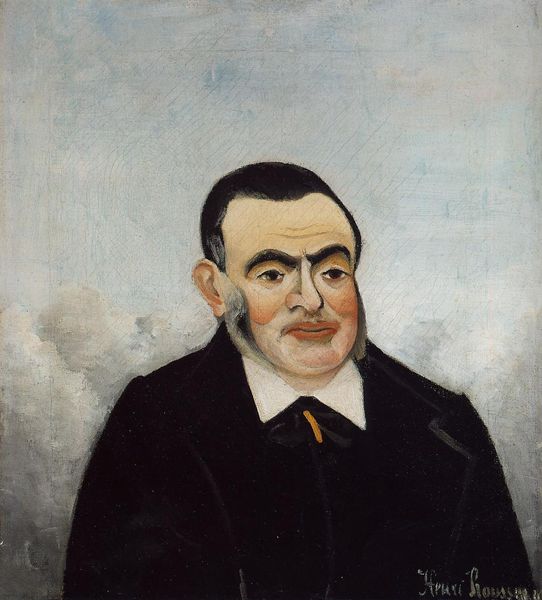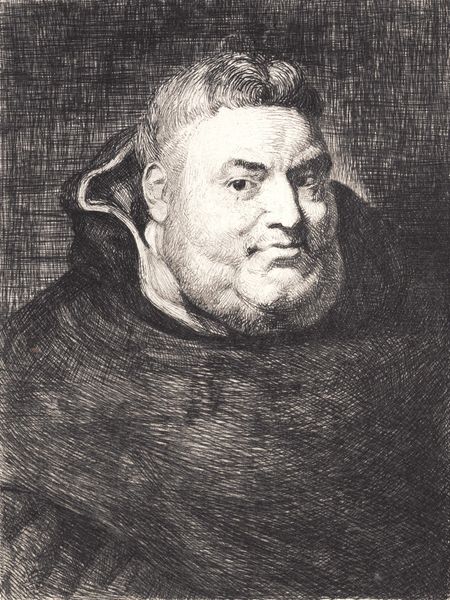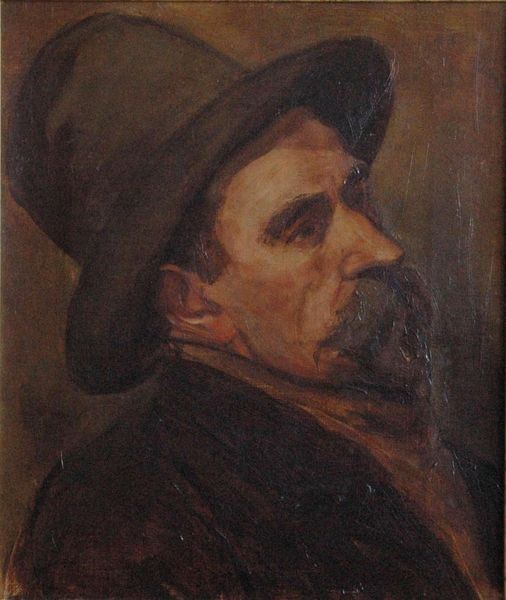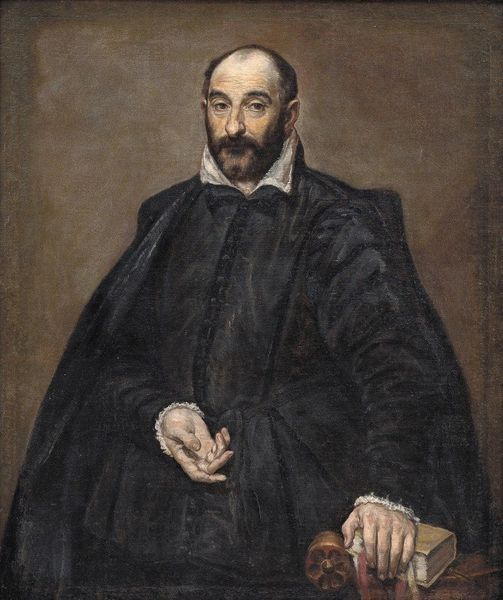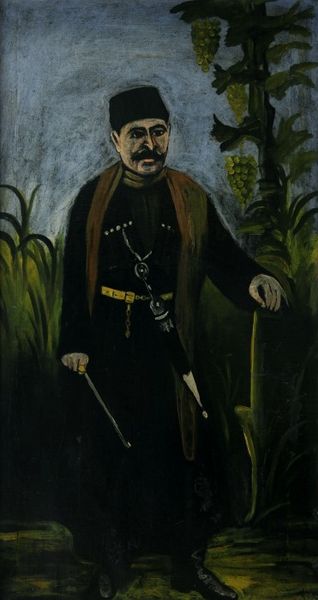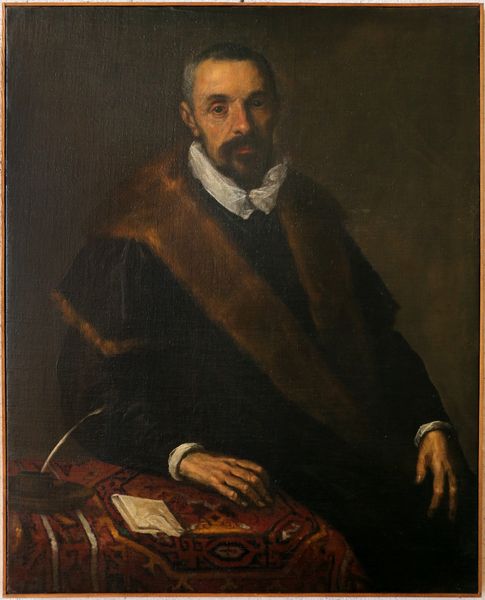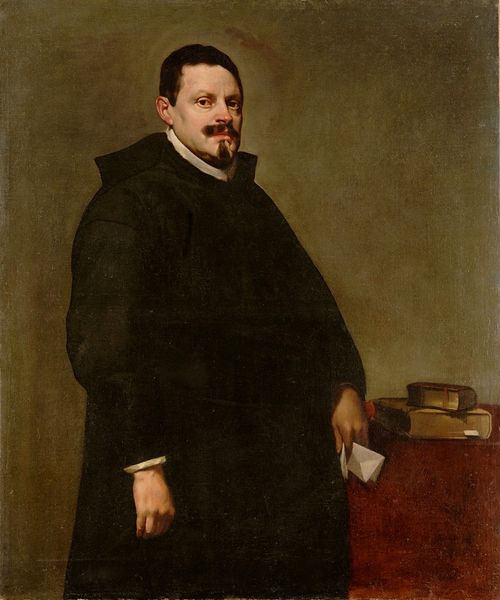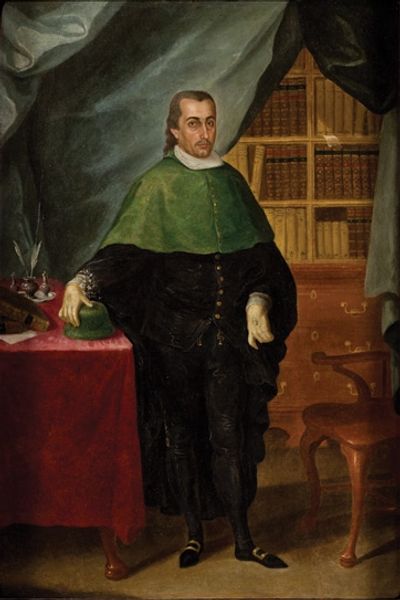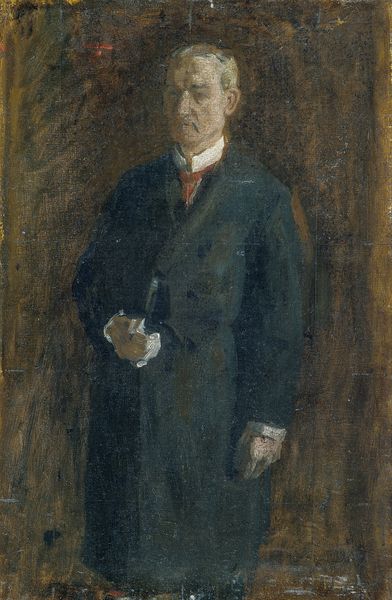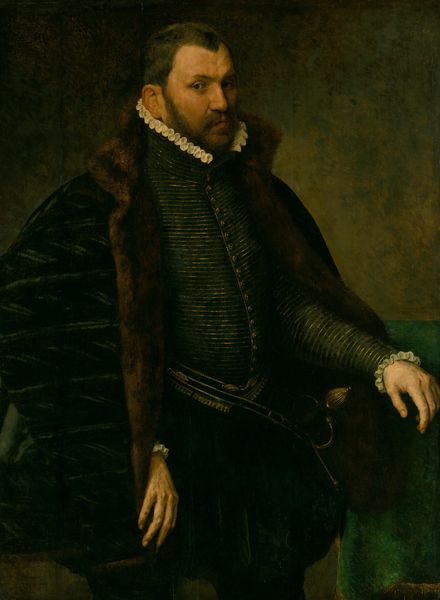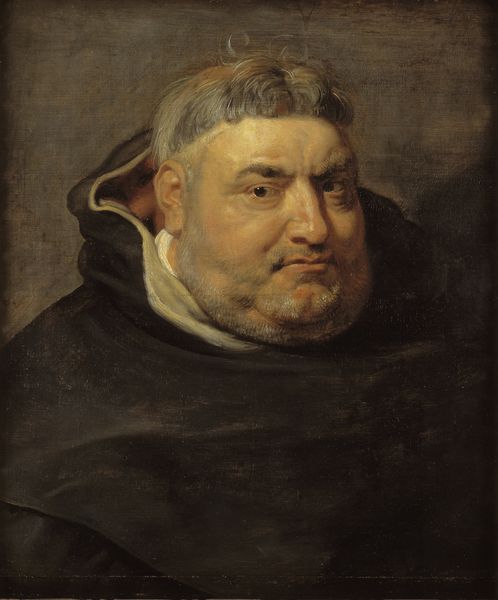
Portrait of Prof. Dr. Josef Amann, Albert Jr., a gynecologist, a university professor and art collector
0:00
0:00
painting, oil-paint
#
portrait
#
painting
#
oil-paint
#
oil painting
#
academic-art
#
modernism
#
realism
Copyright: Public domain
Editor: Here we have Franz von Stuck’s "Portrait of Prof. Dr. Josef Amann," painted in 1926. I’m immediately struck by the weight of this figure; he seems both imposing and intellectual. The green and black robe definitely conveys authority. How do you interpret the symbolism in this portrait? Curator: The robe, that deep, almost forest green contrasted with the severe black, acts as a visual shorthand. Think about green – often associated with growth, knowledge, but also envy or perhaps a hidden vitality. How might these qualities relate to a gynecologist and professor? The black, of course, represents authority and seriousness, but perhaps also mourning, as in academic robes signifying tradition and legacy. Editor: That’s fascinating, the duality of the green. And the fur collar seems so… decadent? Does that add another layer? Curator: Precisely. The fur speaks to status, but also primal power, almost an animalistic strength. Consider its placement around the neck – a symbol of voice, intellect. Is Stuck suggesting a connection between instinct and reason, perhaps a commentary on the doctor's understanding of the body? Do you find tension or harmony in this composition? Editor: I hadn't considered the collar's placement like that! I see a bit of tension, actually, maybe the portrait captures the struggle between intellectual pursuit and the messy reality of the human body. Curator: It's a compelling contrast. Even his gaze feels weighty. Think about how the gaze establishes power dynamics – direct, unflinching. Stuck doesn't just paint a portrait; he captures a cultural and personal narrative, layering meanings within each symbolic element. Editor: I'll definitely look at portraits differently now. It’s amazing how much symbolism can be packed into one image! Curator: Indeed. It is these layers of visual language that make a portrait live beyond its surface.
Comments
No comments
Be the first to comment and join the conversation on the ultimate creative platform.
